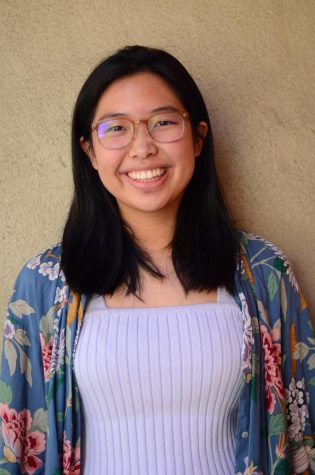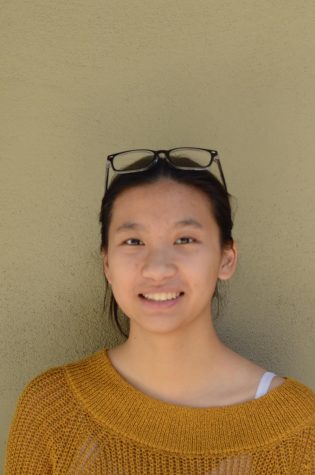Crazy Rich RepresentAsian: Crazy Rich Asians sets a new benchmark for Asian portrayal in popular media
September 3, 2018
Before the classic high school plot of “The D.U.F.F” was “Mean Girls”, and before “Mean Girls” was “Clueless”. Before the romantic musical of “La La Land” was “Singin’ In the Rain”. Before the fake-relationship narrative of “The Proposal” was “How to Lose a Guy in 10 Days”, and before that, “While You Were Sleeping”.
But before “Crazy Rich Asians” was…”Memoirs of a Geisha”? “Enter the Dragon”? “Doctor Strange”, which, believe it or not, is in fact listed under the category of “Asian movie” on IMDb? No, there is far too much village-fleeing and Kung fu in those movies to ever be classified as a rom-com.
Pop culture magazines’ top-whatever lists of best rom-coms believably feature films starring predominantly Caucasian actors and actresses. Even just last year, having an Asian lead in a rom-com would be about as improbable as having a Jackie Chan movie without any martial arts. Asian men and women have usually been represented as nerdy, shy, socially inept sidekicks, and moreover, women, specifically, were often overly-sexualized and portrayed as “exotic”.
“The industry is run by white people […] If we go back to history, […] they wanted us to fear Asian men, and they wanted us to emasculate them, and then they also wanted to sexualize Asian women, so it’s always been tough to get the perception for Asian people in regular media and to normalize us.” Laura Sirikul, activist and journalist with Nerds of Color, a community of fans that according to their website, thenerdsofcolor.org, looks at events with a “culturally critical eye”, said.
It is time the media represents Asian men and women as unique individuals, whether confident, funny, smart, beautiful or all of the above. In recent years, shows like “Kim’s Convenience”, “Master of None” and the ever-famous “Fresh Off The Boat” have done a fantastic job of portraying Asians in all walks of life. De-tokenizing them, if possible.
“Crazy Rich Asians”, however, is not that kind of representation. Though written through an Asian lens and with an undeniably Asian cast and setting, the story of “Crazy Rich Asians” is surprisingly American. Universal, even.
“[After seeing the promotions,] I thought it was really cool it was an all-Asian cast. The trailer is really funny. It seem[ed] like a fun rom-com to watch.” Rashmi Iyer (11), who watched the film, said. “[We should] be aware of the fact that white-washing is going on and be more accepting of different people acting, and that we give Asian Americans more chances in Hollywood.”
“Crazy Rich Asians” represents a narrative we have yet to see more of: the contemporary story of lead Asian actors and actresses. A love story, in particular, one of an Asian American. The life of the Asian American remains under tight wraps in the world of Hollywood, whether due to fear or concerns about the box office or other barriers that make directors and film companies shy away from telling these people’s stories. This movie is actually the first Asian-led mainstream film in theatres to be set in contemporary time since the “Joy Luck Club”, 25 years ago.
“I think this [film] is encouraging. I think there are still barriers for Asian actors, like [some] have to change their names to seem white […]. There are still barriers to be overcome, but I think it’s encouraging to those who want to get into acting but are discouraged because of the whitewashing.” Grant Miner (11), who watched the film, said.
This piece was originally published in the pages of The Winged Post on Aug. 31, 2018.


















![“[Building nerf blasters] became this outlet of creativity for me that hasn't been matched by anything else. The process [of] making a build complete to your desire is such a painstakingly difficult process, but I've had to learn from [the skills needed from] soldering to proper painting. There's so many different options for everything, if you think about it, it exists. The best part is [that] if it doesn't exist, you can build it yourself," Ishaan Parate said.](https://harkeraquila.com/wp-content/uploads/2022/08/DSC_8149-900x604.jpg)




![“When I came into high school, I was ready to be a follower. But DECA was a game changer for me. It helped me overcome my fear of public speaking, and it's played such a major role in who I've become today. To be able to successfully lead a chapter of 150 students, an officer team and be one of the upperclassmen I once really admired is something I'm [really] proud of,” Anvitha Tummala ('21) said.](https://harkeraquila.com/wp-content/uploads/2021/07/Screen-Shot-2021-07-25-at-9.50.05-AM-900x594.png)







![“I think getting up in the morning and having a sense of purpose [is exciting]. I think without a certain amount of drive, life is kind of obsolete and mundane, and I think having that every single day is what makes each day unique and kind of makes life exciting,” Neymika Jain (12) said.](https://harkeraquila.com/wp-content/uploads/2017/06/Screen-Shot-2017-06-03-at-4.54.16-PM.png)








![“My slogan is ‘slow feet, don’t eat, and I’m hungry.’ You need to run fast to get where you are–you aren't going to get those championships if you aren't fast,” Angel Cervantes (12) said. “I want to do well in school on my tests and in track and win championships for my team. I live by that, [and] I can do that anywhere: in the classroom or on the field.”](https://harkeraquila.com/wp-content/uploads/2018/06/DSC5146-900x601.jpg)
![“[Volleyball has] taught me how to fall correctly, and another thing it taught is that you don’t have to be the best at something to be good at it. If you just hit the ball in a smart way, then it still scores points and you’re good at it. You could be a background player and still make a much bigger impact on the team than you would think,” Anya Gert (’20) said.](https://harkeraquila.com/wp-content/uploads/2020/06/AnnaGert_JinTuan_HoHPhotoEdited-600x900.jpeg)

![“I'm not nearly there yet, but [my confidence has] definitely been getting better since I was pretty shy and timid coming into Harker my freshman year. I know that there's a lot of people that are really confident in what they do, and I really admire them. Everyone's so driven and that has really pushed me to kind of try to find my own place in high school and be more confident,” Alyssa Huang (’20) said.](https://harkeraquila.com/wp-content/uploads/2020/06/AlyssaHuang_EmilyChen_HoHPhoto-900x749.jpeg)








